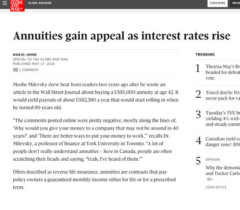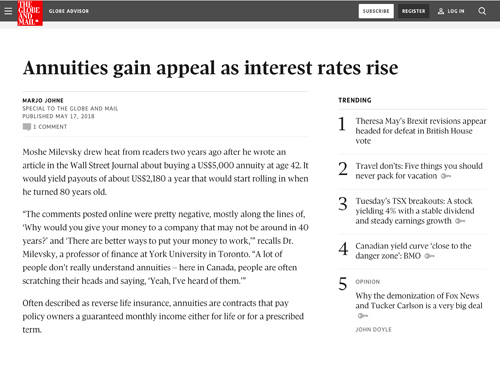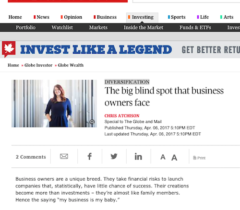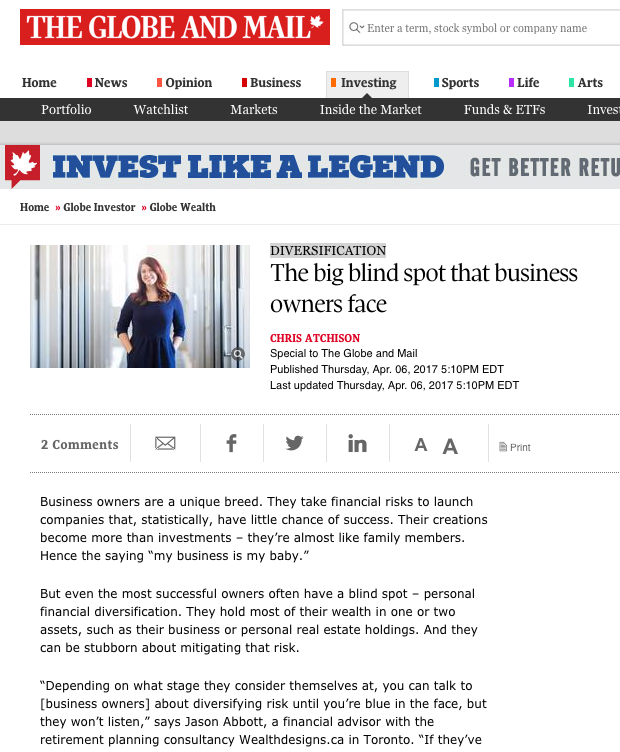![]()
PAUL BRENT
SPECIAL TO THE GLOBE AND MAIL
PUBLISHED NOVEMBER 7, 2019
Estate planning can present the greatest set of challenges for financial advisors. Doing it right means helping clients confront their mortality, employ an array of financial strategies and navigate potential tension among family members.
The stakes are high. What works best? And what should advisors avoid when it comes to estate planning?
Start with simply having the discussion. Clients can put off talking about their death. Advisors sometimes also put the topic on the backburner because they’re working toward shorter-term goals and handling more immediate issues.
“Many advisors are focused only on managing investments for their clients and neglect addressing estate-planning concerns,” says Tina Tehranchian, branch manager and senior wealth advisor at Assante Capital Management Ltd. in Richmond Hill, Ont.
So advisors need to get it on the agenda and be well prepared when discussing the topic, she says.
“Have a comprehensive estate-planning questionnaire and a checklist of all the things you need to discuss. Good information-gathering is crucial when it comes to estate planning. Probing questions can get your clients to think about difficult issues,” Ms. Tehranchian says.
Topics to consider include: What are each client’s estate distribution intentions? Who would clients like to appoint for various positions (i.e. executor, guardian, attorney for health, attorney for property, etc.)? Are there any material loans or advances to beneficiaries that the client intends to forgive or adjust on death?
In advance of a meeting, ask clients to collect and prepare critical estate documents. That can include a will, life-insurance policies, pension records and beneficiaries.
“Say to your clients, ‘Bring me the [documents]. We’ll review them together and make sure that this is still what you want to do,’” says Frank Wiginton, chief executive at A Better Quality of Life Financial Consulting in Toronto.
Clients often have an outdated will or none at all. Jason Abbott, president of WEALTHdesigns.ca Inc. in Toronto, says his own parents resisted his constant urging to draw up a will. They finally acted after hearing a radio program on estate planning.
“Sometimes, they have to hear it multiple times and from multiple sources before they take action,” he says.
Mr. Abbott points to one of the most famous cautionary tales of neglecting estate planning: the singer Prince. He died at 57 years of age in 2016 without a will (or a spouse or children). The massive estate remains unsettled.
“I have to imagine that three-quarters to 80 per cent of his estate will be eaten up by taxes and legal fees. How can you amass so much wealth and not do something so basic as a will? It happens all the time,” Mr. Abbott says.
Even if clients have a will, circumstances and assets can change, even in a short time frame. Thus, it’s important to revisit that document regularly.
“Every will should be reviewed thoroughly to ensure it is aligned with your client’s wishes and expectations,” Ms. Tehranchian says.
But estate planning goes far beyond just having a will and can have many moving parts. For example, there can be cross-border financial issues, businesses at play, or families in which beneficiaries have special needs. Because of all these complexities, advisors should have a team of specialists to rely on.
“Have a good network of estate-planning lawyers that you can refer your clients to. You need lawyers with different kinds of expertise,” Ms. Tehranchian says.
Estate planning is also emotional. Once the discussion gets going, clients may have all sorts of ideas of how finances, legacy and family matters should be handled.
“Your job as an advisor is to be non-judgmental,” Ms. Tehranchian says. “Point out the pros and cons of their decisions and the potential impact they could have on family harmony. Help your clients make an informed decision and achieve their estate-planning objectives in the most tax-effective manner.”
Charitable bequests could be an important part of the discussion, she adds. “Finding out about their philanthropic intentions helps strengthen an advisor’s bond with the client, by showing that you deeply care about their values.”
One common mistake to avoid is taking extreme measures in estate planning to avoid probate fees, Mr. Wiginton says. “Everybody feels that probate fees are a tax; they are not. They are an administrative fee on an estate.”
Probate fees vary across the country. The contortions some Canadians put their estates through to avoid them are legend, says Mr. Wiginton, author of How to Eat an Elephant: Achieving Financial Success One Bite at a Time.
“I have seen people spend tens of thousands of dollars to set up trusts and holding companies. It is costing them a lot of money, time and effort to do all that, just to try and avoid paying probate fees in the future,” he says.
Mr. Abbott also worries that various strategies to get around those fees can create family strife in the future among heirs.
For example, a child might feel that he or she was not treated fairly because another sibling was chosen as a joint owner for assets such as the family home.
“Sometimes, the $15,000 [probate fee] is a small price to pay to avoid litigation, legal fees and disharmony,” Mr. Abbott says.






